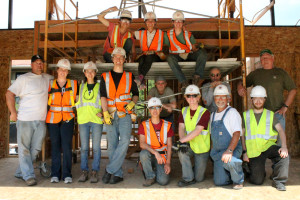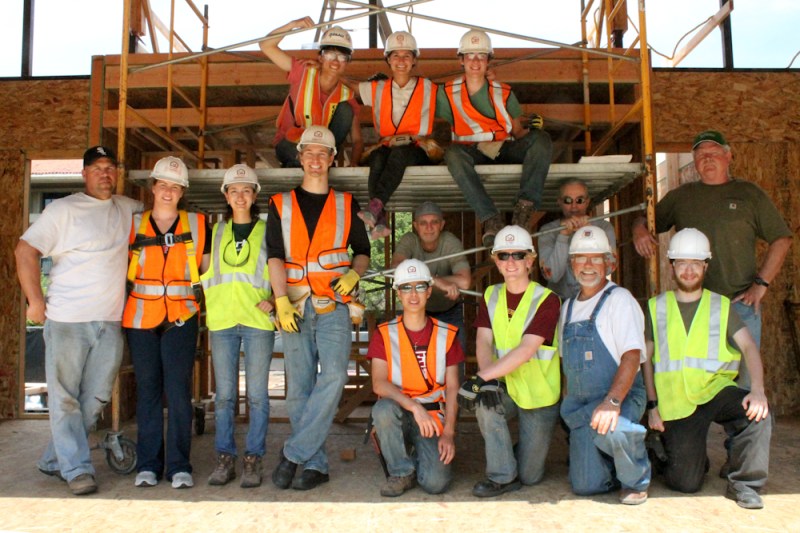
Students often come to Stanford hoping to learn skills for their future dream job, but for the students participating in Solar Decathlon, the dream job came to them.
Hosted by the U.S. Department of Energy, Solar Decathlon is a competition that brings together 19 teams from around the world, each tasked with creating a sustainable home and presenting the work in Orange County, which took place this past October. Stanford participated in the competition for the first time this year.
“It’s a fantasy project for a product designer,” said Max Cougar Oswald ’12 M.S. ’14, a master’s student who worked on the Stanford design team in this year’s competition. “They basically told us there was an infinite budget, we had full creative freedom – we could basically make whatever we want.”
Oswald and the other Stanford designers named their project Start.Home, aiming to design a flexible working and living space by integrating modern technology with green initiatives.
Although the competition has already ended – the Stanford team won first place in Affordability and third place in Market Appeal – the home is still in one piece and is soon to be inhabited.
“It is actually going to Jasper Ridge, a biological preserve,” said Lilly Shi ’14, communications lead for the Stanford team. “The resident ranger there lives on the preserve with his wife and daughter, and we’re giving them the house.”
While the competition was only a week long, preparations and independent study classes for this year’s project began immediately after the Stanford team was selected by the Department of Energy in January 2012, said Derek Ouyang ’13, M.S. ’14, the project manager for the team.
To compete, schools must submit proposals to the Department of Energy. Since this was Stanford’s first entry in the competition, Ouyang and five other students worked on finding faculty advisors and University support at the end of 2011.
The project timeline roughly split into two halves, with the planning and vision being laid out in the first year and implementation taking place in the months immediately preceding the competition.
“The first part is all of the design and the networking and getting sponsorship and raising money,” Shi said of the timeline. “The second part of it is actually using the funds and using the ideas we had.”
The main design vision that the group agreed on features a device called the core, a 12-by-15-foot box that serves as the engine for the home. Shi sees this core as a mass-producible, fundamental unit around which any construction could be created.
In June of 2013, the product design team was assembled to create tangible iterations of its outlined vision. Most of the product design team came from mechanical engineering background or the joint program in design.
“The classes worked on concepts, but none of the ideas made it past a whiteboard,” Oswald said.
The job of the small design team was to select the ultimate design of the house from several possible routes.
In the midst of this summer’s construction, Stanford Solar Decathlon sent Oswald to speak at TedX Orange Coast about theories of design as part of the project’s marketing campaign.
Oswald believes that a good tool is an extension of self, something he thinks he created in his new sink design for the Start.Home, which is turned on and off using one’s legs, not hands.
“You use exactly as much as you need every time by default,” Oswald said in his talk. The results spoke for themselves. Water usage in his apartment went down by two percent after he installed the prototype in his bathroom.
Over 200 people worked on some part of the project throughout the past two years, with multiple people joining and staying for only a quarter. At any one time, between 20 and 50 people were working on the project.
Many team members hope to continue in design or architecture after graduation. Part of the success of the team, Oswald believes, lies in this enthusiasm.
“The team was so into it that we never had problems with people shirking their duties and just not following through,” Oswald said of the team dynamic.
Looking into the future, Shi said that the team will check in periodically to interview the residents and obtain data from the sensors for future projects.
Oswald felt lucky to have participated in this project and encouraged students to get involved.
“There should be more projects like this,” Oswald said. “You have to solve real world problems and on Stanford’s budget.”
Contact Alex Zivkovic at aleksa ‘at’ stanford.edu.
